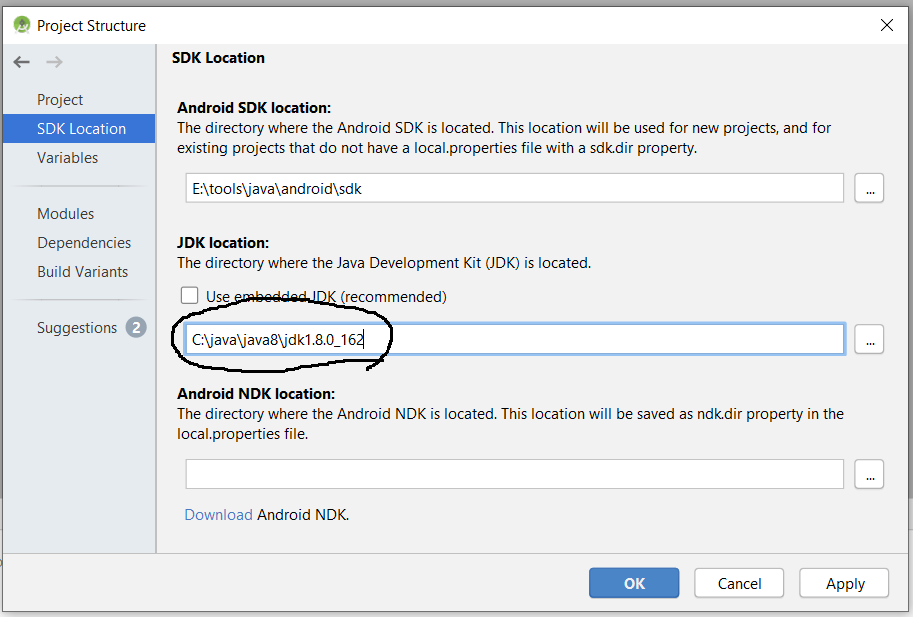
- #ANDROID STUDIO SDK LOCATION WINDOW HOW TO#
- #ANDROID STUDIO SDK LOCATION WINDOW INSTALL#
- #ANDROID STUDIO SDK LOCATION WINDOW UPDATE#
After that select your SDK path, then click on Apply option, and then click on the OK option.
#ANDROID STUDIO SDK LOCATION WINDOW UPDATE#
You can update your SDK path by clicking on the Edit option. Inside this screen, you will get to see your SDK path. The simplest way to set up the prerequisites is to download Android Studio for Windows, run it, and follow the Setup Wizard it will present to guide you. That’s it! It took a couple minutes for Android Studio to finish opening the project for the first time, but the `local.properties` file was created pretty quickly. Click on Appearance and Behavior option > System Settings options and then click on the Android SDK option to get to see the below screen.
#ANDROID STUDIO SDK LOCATION WINDOW HOW TO#
Here’s how to open your project in Android Studio: Android SDK registry location: HKEYLOCALMACHINESOFTWAREWOW6432NodeAndroid SDK Tools From Visual Studio 2017 15.7.4 and later, we could not see the above stated 'Android SDK registry location'. Step 3: In project structure window, on top left there is an option SDK location Step 4: Under Android SDK location option your current SDK is located Step 5: If you want to change it then click on the.

The `local.properties` file was automatically created when Android Studio opened the folder, and my project worked perfectly after that. I was ultimately able to solve the problem by simply opening my project’s Android folder in Android Studio. Then go back to Android Studio and in the SDK Tools, check-mark ‘ ’ Android-SDK Platform-Tools. This didn’t feel right to me since I never had to do that for my other apps.

#ANDROID STUDIO SDK LOCATION WINDOW INSTALL#
SDK Manager Once you are in the SDK Manager, under SDK Platforms, install the SDK Platform for your respective Android version.

Then, on the left-hand side, make your way to Appearance & Behavior > System Settings > Android SDK. Solutions on the Internet involved different convoluted steps for different operating systems and modifying the computer’s environment variables. In the Android Studio window, open up the Preferences window by going to File > Settings. I was confused because I didn’t mess with the Android project at all and I followed all of React Native’s instructions for my new app. Set the SDK location in the Android section. Define location with sdk.dir in the local.properties file or with an ANDROID_HOME environment variable. Follow the same instructions given in the Setting up Android Studio section. I recently created a new React Native app, SkinSafe, for a hackathon (we won)! While trying to run the app on an Android emulator, following the React Native docs, I came across the following error: Error: SDK location not found.


 0 kommentar(er)
0 kommentar(er)
